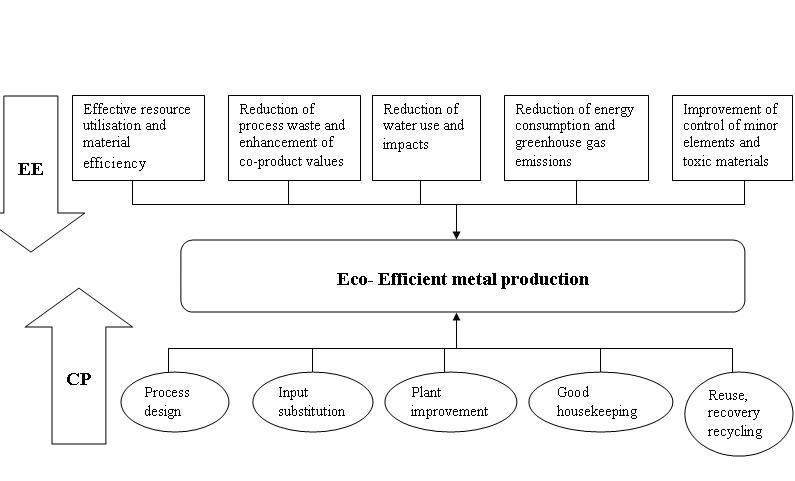Difference between revisions of "EE in metal industry"
m (Changed protection level for "EE in metal industry" ([edit=sysop] (indefinite) [move=sysop] (indefinite))) |
|
(No difference)
| |
Latest revision as of 10:39, 1 March 2013
1. DEFINITION & OBJECTIVE
From precious metals in the computer, to iron and light metals used in bodies and engines of the cars, trains and airplanes that provide transportation of goods and mobility of people- all depend on the use of mined and non-renewable materials. The wide range of use requires the development of a global sustainable agenda including two main goals: firstly, to increase the availability of metal-dependent products and services to a large scale of the global population and secondly to protect the nature from depletion of non-renewable metal ores and also from the waste and emissions which are generated during production. In other words: to achieve environmental sustainability and resource conservation.
2. FIELD OF APPLICATION
Here the implementation of different EE opportunities in the primary metal production is shown. Metal products can be sourced from primary production (starting from a mined ore body) or from secondary production (recovered from discarded products or production scarp).
3. DESCRIPTION OF TECHNIQUES, METHODS AND EQUIPMENT
Eco efficiency can be seen as the starting point of the implementation of alternatives to achieve more sustainable products and production systems. It should always happen in tandem with changes in production and consumption patterns, in collection and recovery of end-of-life metal products and in secondary metal production. It is closely connected to other preventive environmental management and resource productivity concepts such as cleaner production (CP), pollution prevention (PP) and waste minimisation (WM). In metal industry sector the primary strategy is to maximise the utility of the metal element. We call it materials eco efficiency or material stewardship. Its implementation becomes part of continuous business and process improved cycle, but it has to be noted that the range of opportunity for improvements in the bulk process flows is limited due to scale and complexity.
Figure 1: Connection between CP and EE, Literature: van Berkel, R.
Methods can be implemented into existing plants (operational EE methods) or can be planned for integration in project delivery cycles (design EE methods).
- 1. Operational EE methods
Their aims are the improvement of environmental and economic performances of already existing mines and processing plants. Generally three approaches can be identified:
- Engineering approach
Performing and reviewing materials and energy balances for operations (or also just parts) to generate and evaluate EE opportunities.
- Management system approach
Establish an integrated management system and steer its planning and management review components to achieve the organisations goals in preference by preventive (instead of curative) measures.
- Quality management approach
Make resource productivity and pollution prevention the guiding ethos for the organisation, so that they become part of all organized acticities.
However which approach is taken the aim is to find EE methods that are effective and efficient in the specific operations. An EE opportunity is called effective if it eliminates or at least minimises a specific source of waste (generation of waste or emissions, and/or high energy, water and material use…). It is said to be efficient if the sum of their economic and environmental benefits overweighs the efforts and risks the organisation takes in implementing the opportunities.
- 2. Design EE methods
It is required that EE reviews are a fix part of the standard project realisation. Different reviews are
- Project performance assessment
It identifies the production areas where EE targets can be achieved.
- Design inclusiveness review
A review which shows the generic EE options which are considered and could be incorporated in the project.
- Design opportunity identification
Potential EE options are identified and realized in the project.
Reference: van Berkel, R.: Eco-efficiency in primary metals production: Context perspective and methods, published in Resources, Conservation and recycling 51 (2007) 511-540
